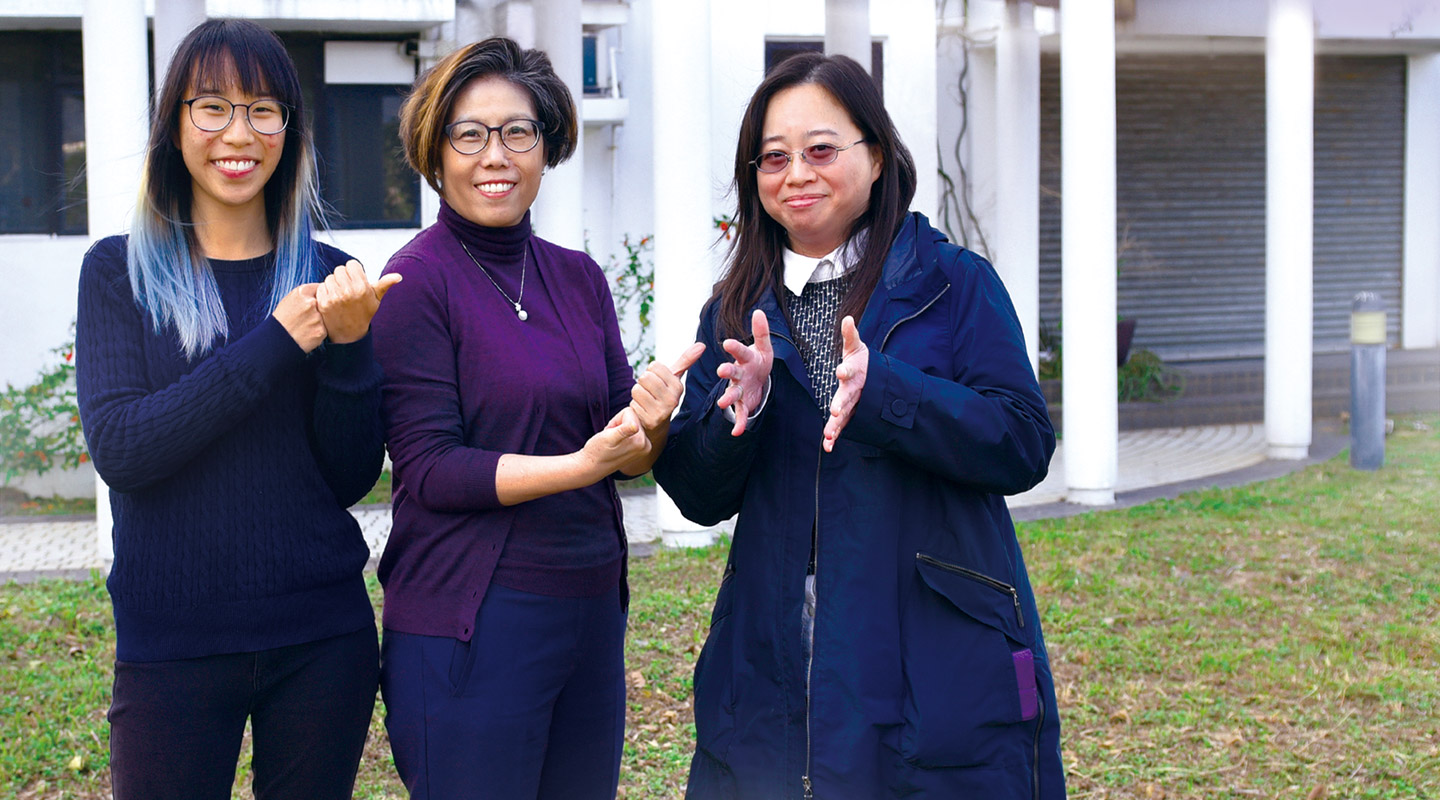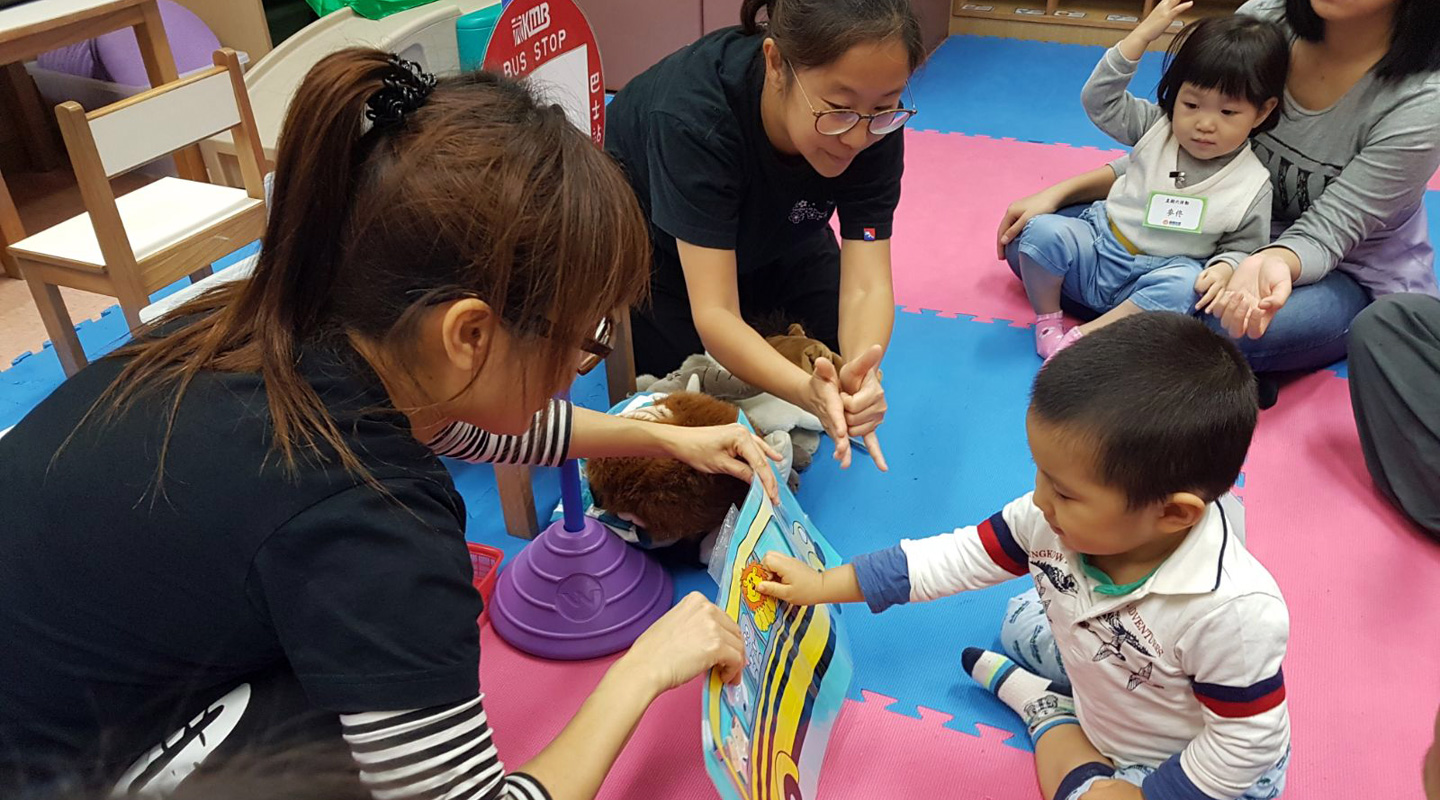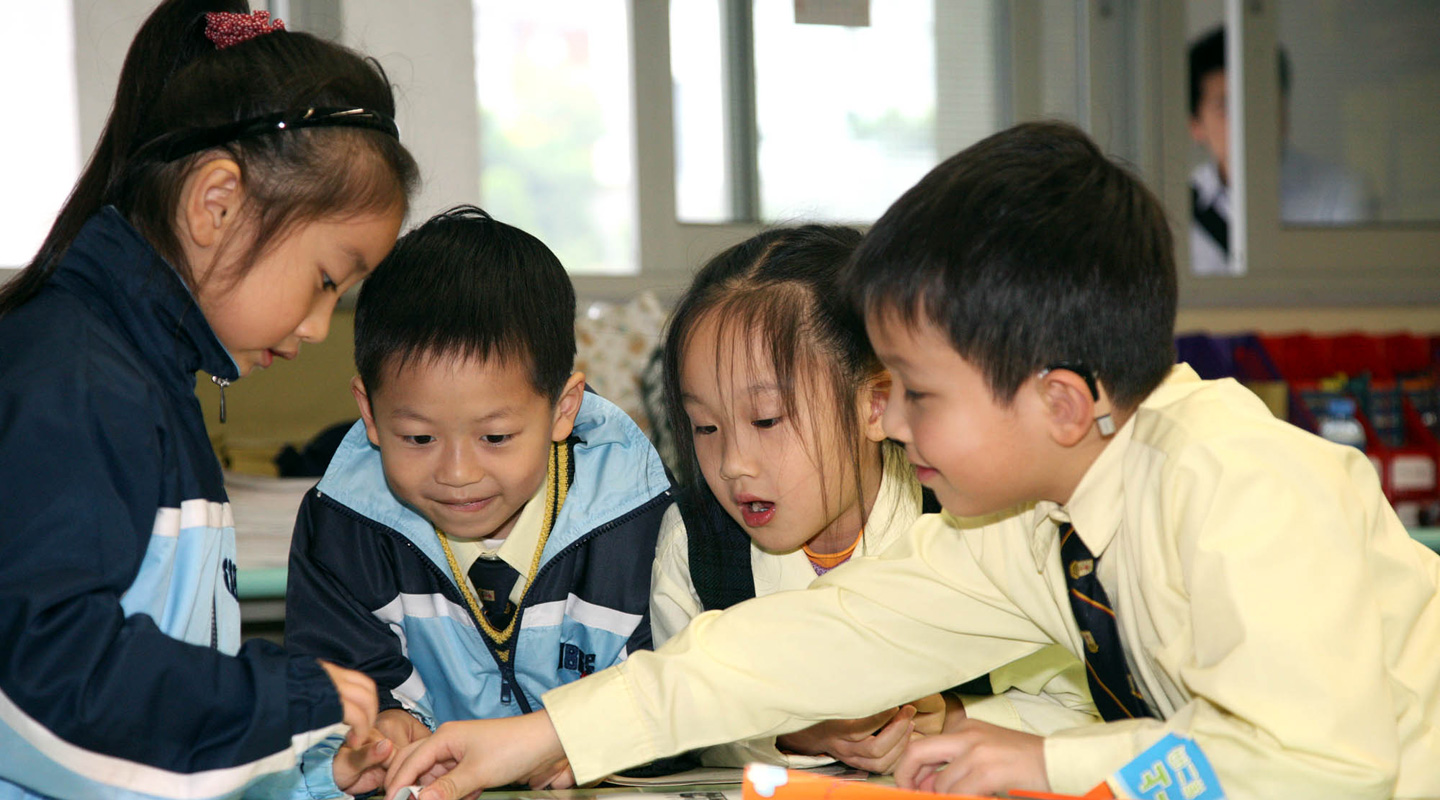Dear readers, With the launch of e-newsletter CUHK in Focus, CUHKUPDates has retired and this site will no longer be updated. To stay abreast of the University’s latest news, please go to https://focus.cuhk.edu.hk. Thank you.
Breaking the Silence
Bridging the Communication Gap Between the Deaf and the Hearing

Sign language is more than merely gestures among the deaf communicators. It has its language system and culture. Prof. Gladys Tang, Professor of CUHK’s Department of Linguistics and Modern Languages and Director of the Centre for Sign Linguistics and Deaf Studies (CSLDS), pointed out that not many teachers, language therapists or social workers could master sign language. There are more than 150,000 deaf and hearing-impaired people in Hong Kong, but local sign interpreters are slightly above 50. ‘The more hearing people learning sign language, the better its impact on social inclusion for the deaf.’
The Department will offer a two-year top-up degree programme—B.A. in Bimodal Bilingual Studies—starting September 2019, as the first of its kind in Asia providing bimodal bilingual training which gives equal emphasis to sign and spoken languages. The quota in the first year is 20. Besides general linguistics and sign linguistics, the programme adopts the Common European Framework of Reference for Languages—Sign Languages in its Hong Kong sign language training. According to the Framework, language proficiency is defined on a scale from A1 (beginners level able to understand and use daily expressions) to C2 (able to use abstract and complex expressions). Professor Tang expects the graduates’ sign language proficiency could attain B1 or above (fulfilling basic communication needs with the deaf).
The Irreplaceable Sign Language
Some people may think that the deaf are well served by written communication in black and white or via smartphones. But Prof. Felix Sze of the Department of Linguistics and Modern Languages and Co-Director of CSLDS begs to differ. She thinks that written communication poses a challenge to the deaf because the Chinese grammar differs from sign language‘s. ‘The Chinese sentence “I have no book” becomes “I book no have” in sign language. To require the deaf who are no native readers and writers of Chinese to follow Chinese grammar is like asking a Chinese-speaking person to express herself in Chinese but following English syntax.’
Kim, a graduate of the Department, added, ‘The deaf are more adept at sign language which allows them to receive messages and express themselves in full. Important acts such as giving a police statement or explaining symptoms to a doctor highlight their reliance on sign language to communicate effectively and precisely.’ Kim met three deaf classmates in her undergraduate studies. To communicate with them, she took a few sign language electives of the Department and even completed the Professional Diploma Programme in Sign Language Interpretation offered by CSLDS. To cultivate a truly inclusive society, she thinks an understanding of and empathizing with the communication needs of the deaf is a prerequisite.
A Versatile Tool for Expression
After graduation, Kim joined the social enterprise SLCO Community Resources Limited (SLCO-CR) founded by CSLDS. The scope of her job includes facilitating sign bilingualism and offering sign interpretation. The first three to five years since birth are most vital for language acquisition, including sign language. The flagship project of SLCO-CR is the Fun with Sign and Speech—Early Sign Bilingual Development Programme, targeting deaf and hearing children aged 0–6 or children with special education needs. Through the bilingual input in visual and auditory modes, the project could facilitate the children’s overall development.

Would acquiring sign and spoken language at the same time hamper the children’s language development? Professor Tang thinks that bilingual interaction actually consolidates children’s language foundation. ‘When Hong Kong students begin to learn English, their mother tongue inevitably interferes. But error-making is part of the language learning process. When they further immerse themselves in the English context, they would be able to differentiate the two. Many bilingual studies indicate that bilingual children are able to differentiate between the two languages.’
Kim chose a deaf child in the Sign Bilingualism and Co-enrolment in Deaf Education Programme to study for her graduation thesis. She arranged the child to play with a deaf person, a hearing person without sign language knowledge, and herself who is competent bilingually. She observed that the child signed fluently with the deaf, spoke to the hearing person, and interacted bilingually with her. She said, ‘The child’s father can hear and his mother is deaf. He grows up in a bilingual context and therefore is able to switch between sign and spoken language.’

Fixing the Loophole of Unimodal Communication
Nowadays, the medium of instruction in deaf education is mainly spoken language. Professor Sze doubts the effectiveness of such a unimodal communication. She explained: a deaf child can lip-read her teacher and see the labial consonants like m, p and b, but not sounds such as long vowels with a lowered jaw or rolling r. This explains the lower Chinese proficiency of deaf students who learned by only lip-reading their teachers.
Bimodality means giving the auditory/oral and the visual/spatial equal footing. The visual/spatial mode means gestures and facial expressions. The latter is also part of sign language grammar, which helps the deaf better understand the content. For example, the gestures of ‘happy’ and ‘very happy’ are the same. But if the signer uses a more exaggerated facial expression, the meaning of ‘very happy’ is conveyed. Professor Sze said, ‘According to the studies of sign linguistics and deaf children language acquisition, bimodal bilingualism improves deaf children’s learning. Sign language can stimulate their oral and written language development and enhance their learning motivation.’
Students of the new programme will take electives in education, social work and interpretation, and need to undertake internship or research. Professor Tang said, ‘The curriculum aims at laying a solid bilingual knowledge foundation. Graduates may find jobs in many sectors or further their studies in professions like teaching, social work and language therapy.’ She hopes that the graduates can be competent bimodal bilinguals who will serve their clients with professional knowledge and co-build an inclusive society.
J. Lau
This article was originally published in No. 532, Newsletter in Feb 2019.